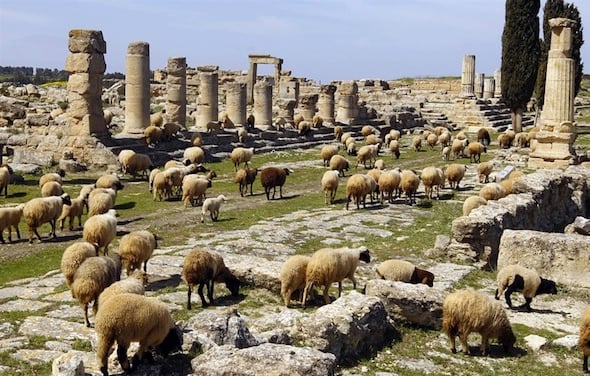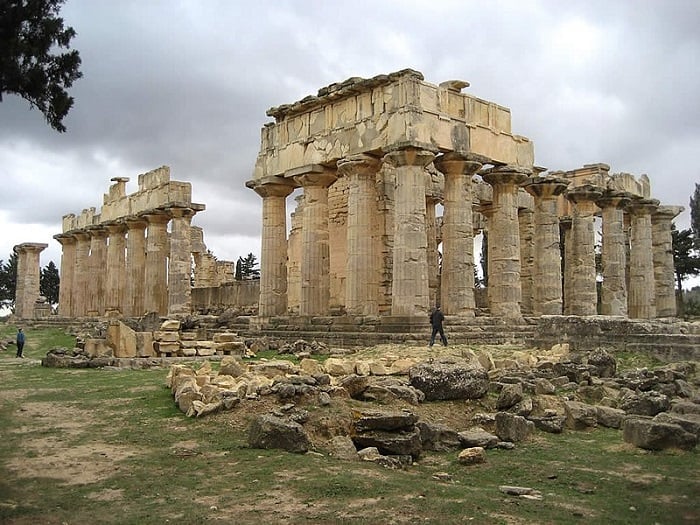
In a stream, an archaeologist working in the ancient Greek city of Cyrene in todays Libya, found the head of the statue of Bacchus, also known as Dionysus in Greek, the god of wine and theater.
Archaeology in ancient Greek city of Cyrene
While carrying out research in the city of Shahhat near the ancient Greek city of Cyrene in eastern Libya, an archaeologist detected something of interest. Nestled in the foothills of the al-Jabal al-Akhdar region, Issam Al-Menfi spotted a severed part of an ancient statue.
The item is the third to be discovered since Storm Daniel hit the eastern region of Libya last September, according to Libyan News Agency. It was collected by Menfi for scientific purposes.
The agency confirmed that the head of the statue is that of Bacchus, as the Romans called him, or Dionysus, as he was known to the ancient Greeks. The god was symbolic of a number of things, including wine-making, orchards and fruit, vegetation, fertility, festivity, insanity, ritual madness, religious ecstasy, and theater.

Cyrene is believed to have been founded in 631 BC by Greeks from the island of Thera (Santorini), located in the Aegean Sea. The settlers’ first ruler, Battus, founded the dynasty of the Battiads, which ruled the city for eight generations until 440 BC.
The city grew under the rule of the Battiads, eventually encapsulating several ports known today as Marsa Susah, al-Marj, and Benghazi.
With the rise of Ptolemaic Egypt in 323 BC, Cyrene prospered intellectually and became one of the classical world’s most influential places. In due course, with its great philosophers and renowned medical school, the city caught the attention of the Romans, who brought it under their control in 96 BC.

Between the years 67 and 30 BC, Cyrene merged with the then Roman province of Crete, where the provincial capital was located. Cyrene became the chief city. Archaeology in Cyrene has been particularly fruitful.
Another Sculpted Head of a Dionysus Statue Discovered in Aizanoi
Another manifestation of the sculpted head of Dionysus was discovered earlier in the ancient Greek city of Aizanoi in today’s western Turkey. It was found alongside the marble head of Aphrodite, the goddess of love. Aizanoi, like Cyrene, was an important political and economic center in Roman times.
At the time of unearthing, excavation coordinator Gokhan Coskun told Anadolu Agency: “These are important findings for us, as they show that the polytheistic culture of ancient Greece existed for a long time without losing its importance in the Roman era.”
Coskun, an archaeologist at Dumlupinar University in Turkey, went on to explain that the statue heads had been found in a previous dig but weren’t unearthed until some time after in a creek bed in Aizanoi. The archaeologist believes the findings point to a possible sculpture workshop in the region.
In August, a statue of the ancient Greek goddess Hygieia, the goddess of health and cleanliness, was also unearthed in Aizanoi.